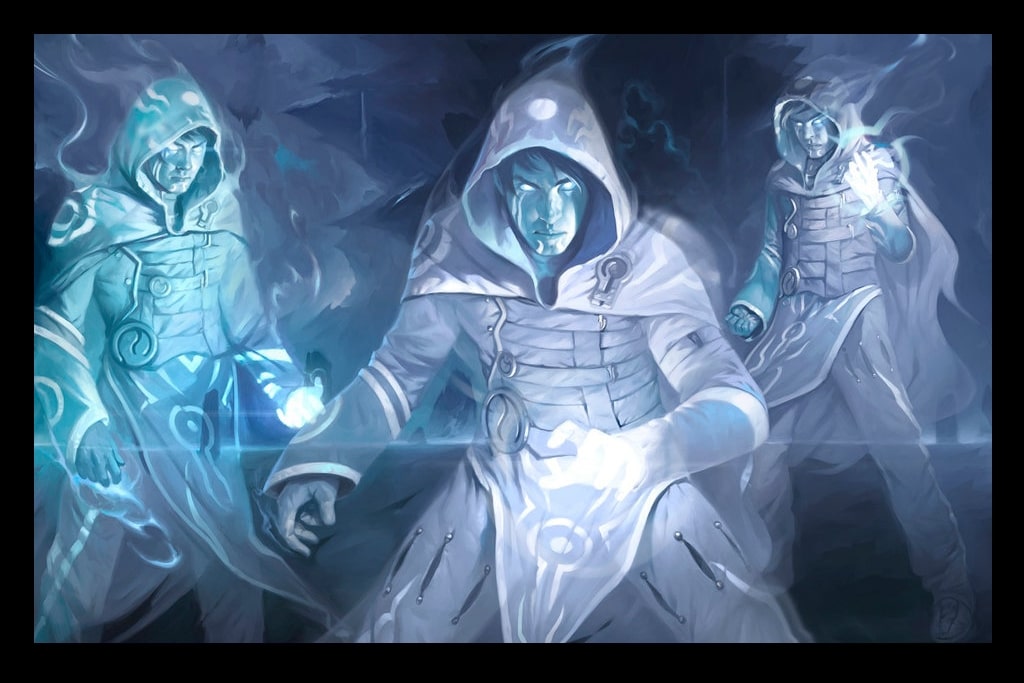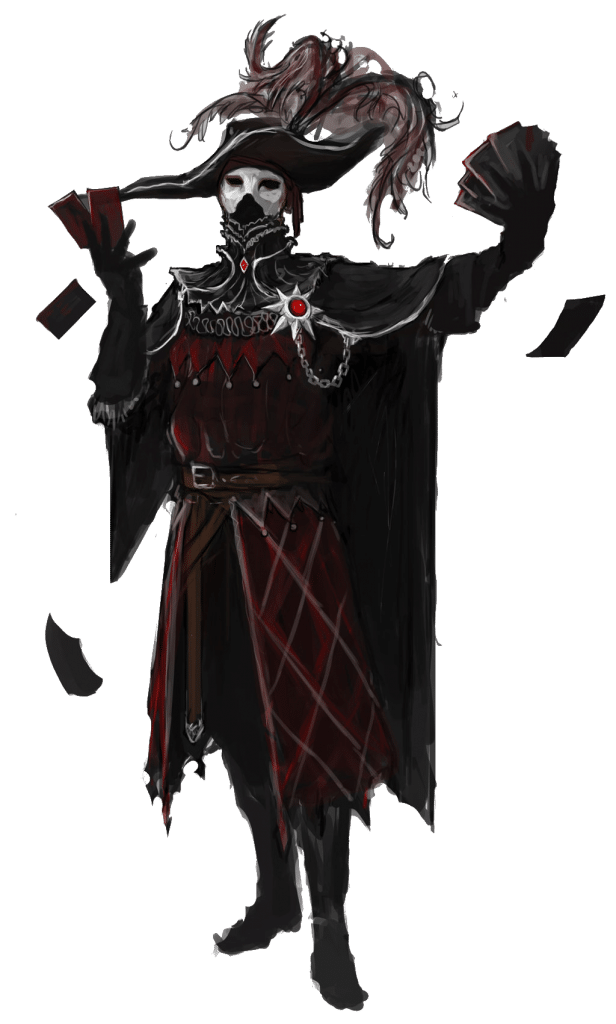Today I am going to do something a little different for the 5e illusion wizard. The illusion wizard is the most versatile and adaptable wizard class. For this reason, they can easily be the most powerful wizard, but also one of the hardest to play. Best used on those who can think of a million & one uses for mundane tricks.
Now, usually, I would do a completely mathematical look at how they perform. But, while people love the sole focus on abilities, a lot of beginners are wanting a build guide as well. So, that’s what I am doing today! I will do my review on each ability like usual but also how I would best capitalize on it. So enjoy and let’s begin the guide to the most versatile wizard of them all, the 5e illusion wizard.
How I Am Evaluating Them
For those who have read my previous reviews, feel free to skip this. If you haven’t, welcome! This is going over how I evaluate how strong a class is. There are three things that I am reviewing in the in-depth guide. I look over how strong the subclass is in combat, how much utility it has, and, if applicable, its’ roleplay ability. This way everyone’s playstyle can be shown to fit their needs.
Now, when deciding if something is good for a guide, I look at what the subclass is trying to accomplish. Then look at how successful it succeeds in that task. For instance, in a previous article on the Divination Wizard, I concluded, it attempts to optimize a spellcasters save or suck spells. I then figure out how well that ability succeeded in forcing enemies to fail depending on the stat, and see how soon it comes online.
If it is accomplished at level 2, then it is early game. Level 6 it is Early-Mid, Level 10 Late-Mid, and Level 14 is late game. I rate earlier tiers better as most Dungeon and Dragons Campaigns do not go beyond level 8. Without further a due, let start this review on the 5e Illusion Wizard.
Color Meaning
GOLD– “That’s gold Jerry! Gold!” If an ability is highlighted gold, then this means that this ability not only is what defines your subclasses but accomplishes it better than almost any other subclass. I rarely do Gold ratings, so definitely pay attention to them if you see me do it.
Sky Blue –If the ability is sky blue, it means that this ability is a defining trait in your subclass but for one reason or another is not game-breaking like gold.
Blue– If it is just blue, then it’s a good ability but there are plenty of other abilities that perform better. Still better to have in a subclass than other colors.
Black. Black is ok. These are your more niche abilities that have bonuses in some situations but not useful in others.
Purple – Purple is for very niche abilities. They have times when they are good, but these are rare and almost never come up. Not the best color to see for an ability.
Red- Red is dead. It is the worse color to see on an ability. That said, no matter the color, an ability can work so don’t ignore a subclass if they have a red. Enough imagination and can-do attitude will make it okay but not optimal.
Illusion Wizard 5e (late game)
The illusion Wizard for 5e is a strong subclass for those looking to utilize creativity and roleplay to be a star for your party. While their abilities do not directly harm an enemy, they are great for debilitating your enemies.
Their level 2 abilities capitalize on the cantrip minor illusion by using both sound and image for it. Thus, letting you alter the ways you can cause chaos or set up your party with this.
After that their level 6 abilities allow you to change the illusion to fit your needs depending on circumstances. Making this incredibly adaptable of never having to go all-in for one illusion.
Then, once you get to level 10, you get a solid ability that allows you to stop one attack every rest. Giving you a good panic button, but it definitely has some downsides.
Finally, at level 14, you gain the ability to make illusions real, as long as you can abide by the restrictions.
Because of their abilities to utilize illusions and the large versatility of this class. This class’s actual level of coming online can depend on the person. If you are a master at minor illusion then this comes on early game, but if you just want to make things permanent, then late game. Due to many focusing on their 14th level ability though, for most players, it seems that the illusion wizard in 5e comes online to effectively accomplish its goal late game.
Illusion Savant
Just like the abjuration wizard and any other Player’s Handbook wizard, the illusion wizard in 5e is adept at illusion. As such, if he is copying an illusion spell from another source, it takes him half the time and half the gold to complete. Not bad considering that gives them 33 spells to be able to copy down. That said, considering that is 15% of the wizards spell list, chances are it won’t come up too often.

Improved Minor Illusion
A solid level 2 ability for sure. This ability can be found on page 218 of the Player’s Handbook and basically states.
At 2nd level, you learn the cantrip minor illusion if you already have the cantrip choose a different one from the wizard list. Moreover, when casting minor illusion you can make both sound and an image.
Now, this basically just lets you combine the two minor illusion features into one. Making this better for deceiving or conveying stuff. However, my favorite part of this is the free cantrip at level 2. There is a saying, “Don’t judge by a mage by his spells, but by his cantrips.” Something I fully believe in. So how would I use malleable illusions?
Two ways, one in regard to minor illusion would be how I always use it. To deceive and play tricks. Minor illusion is great for avoiding combat. As such, I would probably utilize it to either trick the enemy into a beneficial position for us. Such as a lump of meat to lead a pack of wolves toward a trap to catch them. Or lead the guards away with a screaming toy or another 5-foot object that will have the guards curious and want to investigate. Once they are somewhere else, sneak through, or lock them in a room. The choices are endless. In fact, to show you how endless, here is a thread that is filled with ideas and stories of minor illusion.
As for the extra cantrip, I would probably choose a cantrip from the best cantrips we don’t think about list. But, if you already have all 3, then I would probably choose Prestidigitation since it’s effects work well with illusion mages.
Malleable Illusions
Once you get to 6th level, you gain the ability, malleable illusions.
Malleable illusion allows you to change any visible illusion using an action that last a minute or longer. You can make it look like anything as long at it is within the parameters of your spell’s illusion base.
With this the 1st level spell, the illusory script becomes god-tier on my list. Now, I already talked in detail on why illusory script is one of my favorite spells to choose from. But to give a quick summary of it from the best wizard spells at level 1, illusory script allows you to make any legally binding document to save yourself. Need an order from the king? Illusory Script. What’s even better is it lasts 10 days. So now, for any Dr. Who fans, you have a 10-day psychic paper that as an action you can change at any time to say whatever you want. If that doesn’t create shenanigans for the party, I don’t know what does.
Now, why that is what I would use this ability for, it also has a large array of uses for any other visible illusion spell as well. Emphasis on the visible part. As it should be noted, the illusion must be a visible one, meaning spells like phantasmal force who are only visible to the creature can not be altered after discovery. But still, with the ability to adapt spells to the situation, it’s almost like being a sorcerer with meta-magic. Making this a solid ability for anyone with a creative mindset.
Illusory Self
I give you the automatic miss ability. This increases a solid defensive maneuver reaction that basically allows you to:
Once a rest, when a creature makes an attack roll against you, you can use your reaction to create an illusory duplicate that will take the hit rather than you. Causing the attack to miss and the illusion to disappear.
With this, you can now save yourself from that one attack that would make you go unconscious, or if you’re concentrating on a spell that is necessary for the party’s survival. But, only being able to do that once a short or long rest seems limited. Moreover, it does nothing against save attacks from things like fireball or a beholder so it’s really weak when you consider the war wizard can have a +2 to AC or +4 to save every turn.
That said, after doing some math, this will come in handy quite a bit for a wizard with a 15 AC. From level 10-20, a monster on average has a 70-85% chance to hit so being able to block one will almost always come up in any combat encounter where a monster is taking a swipe at you. You can reduce these odds, to 45-60% with spells like shield, but this does not use up a spell slot and is an automatic miss.
So I would use this either first if I think I can get away easily, or use shield first if I believe I cannot get away easily. This way I can conserve spell slots for later uses, or I can save an automatic miss for the debilitating attacks that can come up. All in all this ability is useful for stopping roughly 44-88 points of damage a day. Making it a solid ability.

Illusory Reality
The most talked-about ability among illusion wizards in 5e. Its ability to be useful is stronger than malleable illusion. In fact, it’s ability is so good most would give it a gold rating. The full description of Illusory Reality can be found on page 118 of the Player’s Handbook. But for those looking for a summary, the ability allows you to:
When casting a 1st level or higher illusion spell, as a bonus action, you can choose one inanimate or a non-magical object that is part of the illusion and make it real for one minute. However, the object brought to reality is unable to deal damage nor directly harm anyone.
With this, you can bring any object to reality for one minute. Make a cage using silent image and trap the big bad in a real cage. Or swindle the merchant by giving him a giant emerald only for it to disappear soon after.
Now while really good, there are a few drawbacks to the spell. One it can only be for one minute. Two, it must be an inanimate object, and three, it can only be used once per spell. Because of this, the spell gets a sky blue rating.
This puts some restrictions on your creative license. But I would utilize this primarily for level 1-4 spell slots. The reason being, using it on higher spell slots seem pretty wasteful. With enough creativity a silent image, hallucinatory terrain, or illusory script, you can accomplish just about anything you need. For some additional good uses of this ability be sure to check out this quick guide.
Illusion Wizard Build
Due to the innate nature of illusions used for deceiving and persuade people, a strong race for an illusion wizard is one that focuses both intelligence & charisma over others. As such, a half-elf would be incredibly potent with a +2 CHA, +1 INT, & +1 to another stat. But another good choice would be a Yuan-Ti Pureblood or Kenku, both are incredibly powerful & their innate personalities are built upon persuasion and deception.
As for necessary spells, Minor Illusion, silent image, phantasmal force, and hypnotic pattern are solid choices to capitalize on any combat or roleplay scenario.
Moreover, a solid multiclass option would be 3 levels of sorcery or 3 levels of warlock. Both rely on charisma which will be your secondary stats for your class and using either subtle spell, warlock’s misty visions, or even hex. You can add solid options to your list of options for illusion casting.
Besides that, the best role of an illusion wizard is to be a face of the party or the supporting role. To do this you will use your illusions to get the party out of troublesome scenarios, or setting up your party for a successful combo by tricking the enemy or taking them out of the game. These can both be done with spells like phantasmal force. Use it by making a person see something you want them to see that will better you all in a conversation. Then the more popular way is to put the big bad in a challenging situation, such a lake of lava that will hurt him and slow his movement. Playing this style will allow you to capitalize on your strength, illusion spells, and make the party in awe of your creativity.
Conclusion
As can be seen, the illusion wizard in 5e utilizes adaptability, creativity, and deception to take out any situations that come their way. With a few key spells and multiclass options, you can further broaden your options allowing for increased capabilities.
While they may not have the raw destructive power of the evocation wizard, nor the control of the divination wizard, they do gain the largest in creativity with only the conjuration wizard being behind them for the wizard.
- P.S. Now that you know the general information for the 5e illusion wizard. Why not kick it up a notch with Wizard’s Mastery: A Complete Wizard’s Guide! Giving you even more information then than this for all ten wizard subclasses with ways to make your gameplay more memorable and more unique. Check it out today!

